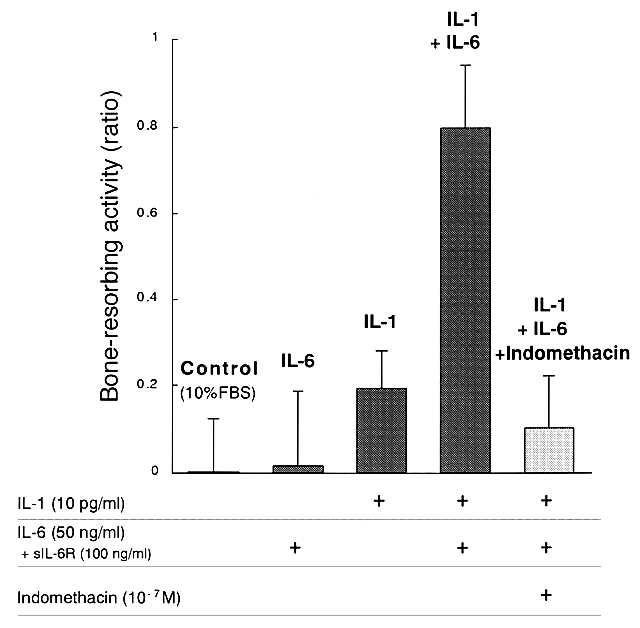September 10-14,1997, Cincinnati, U.S.A.R
Comparison of bone-resorbing activity of IL-1 and IL-6 by time lapsed micro-cinematography.
The Raisz's organ culture system using fetal and neonatal calvaria and long bones has been used extensively to analyze bone resorption. To study the pathogenesis of osteoporosis, however, development of a new culture system using adult bone is essential. In this study, we developed an organ culture of vertebrae collected from adult mice to compare bone-resorbing activity of IL-1 and IL-6 using time lapsed microcinematography. Bone fragments obtained from vertebrae of 5-week-old female mice were cultured with or without IL-1 and/or IL-6 for 12 days. Using a time-lapsed microcinematography technique, morphological changes of bone and bone marrow cells were examined. When IL-1 (1 ng/ml) was added to the organ culture of vertebral bone fragments, numerous osteoclasts appeared on day 5 and the fragments were actively resorbed by the osteoclasts. Bone marrow cells including monocytes and lymphocytes were observed moving around the bone fragments, which were almost completely resorbed on day 12. Osteoblast-like cells were localized around osteoclasts, but they did not grow appreciably. IL-6 (200 ng/ml) also induced osteoclastic bone resorption on day 5, when soluble IL-6 receptor (sIL-6R, 400 ng/ml) was added. On day 10, however, the osteoclasts began collapsing and the bone resorption stopped. After the cessation of bone resorption, osteoblast-like cells started to grow rapidly on the culture dishes. Thus, IL-6 stimulated development of both osteoclasts and osteoblasts, but IL-1 stimulated only osteoclastic bone resorption in the vertebral organ cultures. Submaximal concentrations of IL-1 (10 pg/ml) and IL-6 (50 ng/ml) with sIL-6R (100 ng/ml) did not cause any bone resorption, when they were added separately. However, the submaximal doses of the two cytokines synergistically stimulated bone resorption to the same extent as that induced by 1 ng/ml of IL-1, when they were added simultaneously. These results clearly indicate that both IL-1 and IL-6 are capable of inducing osteoclastic bone resorption, but the effect of IL-6 is somewhat different from that of IL-1 in the organ culture of adult mice vertebrae. This system appears useful for investigating the pathogenesis of osteoporosis.


Bone fragments were cultures with IL-1 or IL-6 with sIL-6R for 10 days. For quantative analysis, area of each bone fragment was calculated on day 10, and the bone-resorbing activity was expressed as the ratio of each bone area to the mean of the control. [ (control area ? sample area ) / control area ] No bone resorbtion was indicated as 0, and complete resorbtion was indicated as 1. ( n=6, mean±S.D.)
